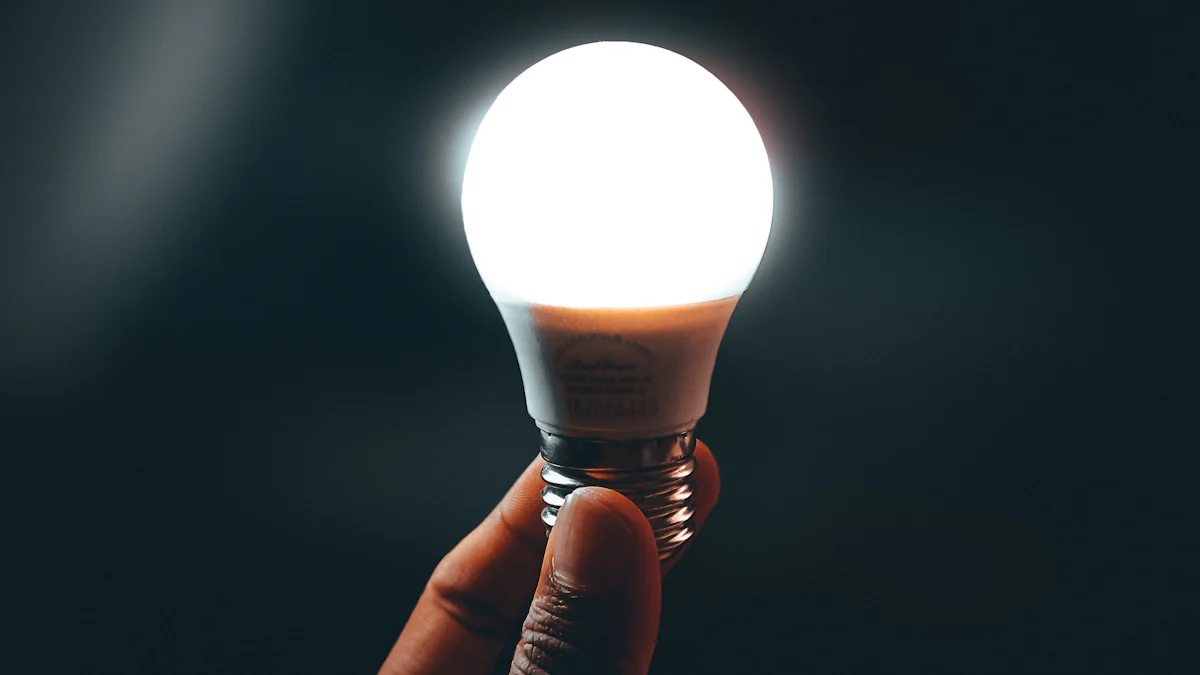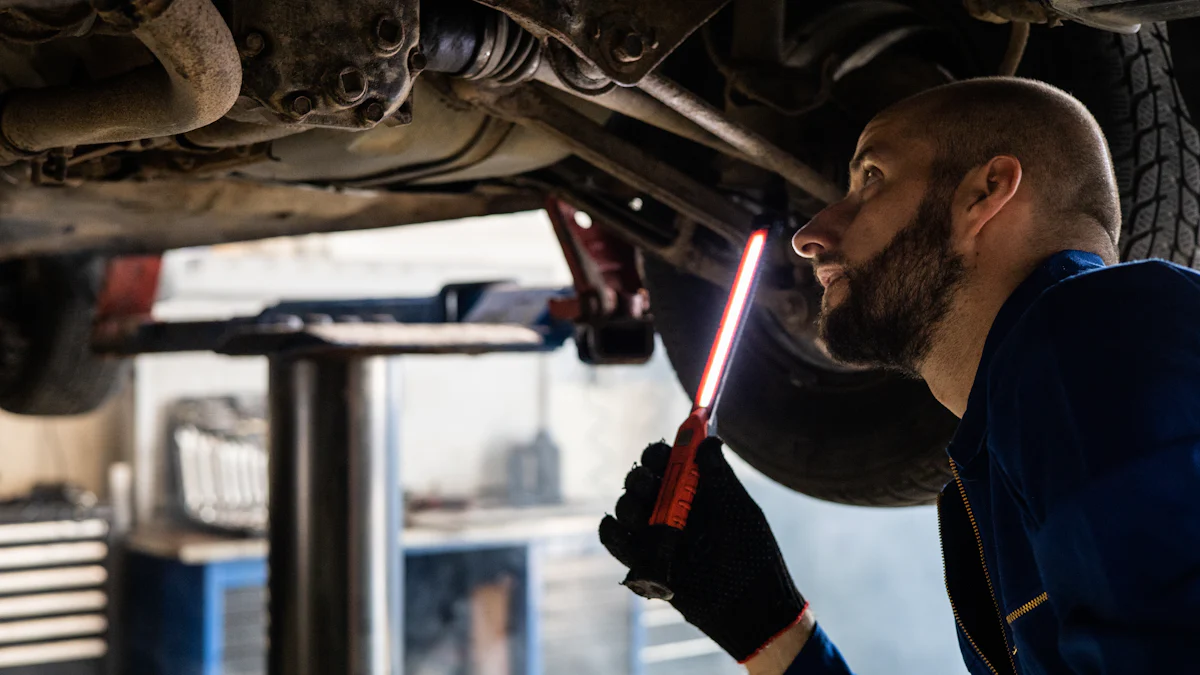
When it comes to illuminating workspaces effectively, LED work lights stand out for their efficiency and brightness. However, these lights can sometimes pose challenges that hinder their performance. Issues like flickering, dimming, or even complete shutdowns are not uncommon. As highlighted by Modern Place Experts, the quality of LED lights plays a crucial role in their functionality. Using substandard bulbs or exceeding recommended wattages can lead to safety hazards and poor performance. This guide aims to empower you to troubleshoot and fix LED work lights efficiently, ensuring optimal productivity in your workspace.
Identifying the Problem
Common Symptoms of Faulty LED Work Lights
Light not turning on
When an LED work light fails to turn on, it could be due to various issues. One common reason is a faulty power supply that needs replacement. Additionally, inspect the power cord for any damages that might be interrupting the power flow. Ensuring a stable power connection is crucial for the proper functioning of your work light.
Flickering light
Experiencing flickering in your LED work light can be frustrating and disruptive to your work environment. This issue is often linked to low-quality LED bulbs or loose electrical connections. To address this, consider replacing the bulbs with higher-quality ones and securing all electrical connections tightly.
Dim light output
If your LED work light is emitting dim light, it may indicate a problem with the LED driver or poor-quality bulbs. Testing the LED driver can help identify if it needs replacement. Opting for high-quality replacement bulbs can significantly improve the brightness and overall performance of your work light.
Initial Checks
Inspecting the power source
Before delving into complex troubleshooting steps, start by checking the power source of your LED work light. Ensure that the power outlet is functioning correctly and providing sufficient electricity to power the light effectively. A faulty power source can lead to various performance issues in LED lights.
Checking the connections
Loose or damaged connections are common culprits behind malfunctioning LED work lights. Take time to inspect all electrical connections, including cords and plugs, for any signs of wear or disconnection. Securing these connections properly can resolve many operational issues with your work light.
Examining the LED bulbs
The quality of LED bulbs directly impacts their performance and longevity. If you notice issues like flickering or dimming, examining the condition of the bulbs is essential. Look for signs of damage or discoloration on the bulbs, as these indicate potential problems that require replacement.
Diagnosing the Issue
Electrical Issues
When it comes to LED work lights, electrical problems can manifest in various ways, affecting their performance. Understanding how to diagnose and address these issues is crucial for maintaining optimal functionality.
Testing the power supply
To start diagnosing electrical issues, testing the power supply is essential. A faulty power supply can lead to irregularities in the light output or even complete failure. By using a multimeter, you can measure the voltage output of the power supply to ensure it meets the required specifications for your LED work light.
Checking for loose wires
Loose wires are a common culprit behind electrical malfunctions in LED work lights. These loose connections can disrupt the flow of electricity, leading to flickering or dimming of the light. Inspect all wiring connections carefully, ensuring they are securely fastened and free from any damage that could impede proper electrical conductivity.
LED Bulb Issues
Issues with LED bulbs can significantly impact the overall performance of your work light. Identifying and addressing these problems promptly is key to restoring optimal lighting conditions in your workspace.
Identifying burnt-out bulbs
Burnt-out bulbs are a prevalent issue that affects LED work lights over time. These bulbs may appear discolored or blackened, indicating that they have reached the end of their lifespan. Replacing these burnt-out bulbs with new ones will restore brightness and efficiency to your work light.
Testing the LED driver
The LED driver plays a crucial role in regulating power distribution to the LED bulbs. If this component malfunctions, it can result in flickering or inconsistent light output. Testing the LED driver with a compatible tester can help determine if it is functioning correctly or if it requires replacement to ensure stable and reliable lighting performance.
Mechanical Issues
Mechanical issues in LED work lights can stem from physical damage or inadequate heat dissipation mechanisms. Addressing these concerns promptly is essential for prolonging the lifespan of your work light and maintaining its efficiency.
Inspecting for physical damage
Regular wear and tear or accidental impacts can cause physical damage to your LED work light, affecting its structural integrity and functionality. Carefully examine the housing, lens, and internal components for any signs of damage, such as cracks or dents, which may compromise its performance.
Checking for overheating
Overheating is a common issue that plagues many LED work lights, often due to poor heat dissipation mechanisms or excessive operating temperatures. Ensure that ventilation around the light fixture is adequate and free from obstructions that could trap heat. Additionally, consider installing heat sinks or cooling fans to prevent overheating issues in the long run.
Repairing the LED Work Light

Fixing Electrical Issues
To address LED work light electrical problems effectively, one must start by replacing the power supply. This ensures a stable and consistent power flow to illuminate your workspace efficiently. Securing any loose wires is equally crucial to prevent disruptions in the electrical connection, maintaining optimal performance.
Replacing LED Bulbs
When it comes to enhancing the brightness of your LED work light, choosing the right replacement bulbs is paramount. Opt for high-quality bulbs that match the specifications of your fixture to ensure maximum luminosity. Follow a step-by-step process for bulb replacement, ensuring a seamless transition to improved lighting conditions.
Addressing Mechanical Issues
Repairing any physical damage in your LED work light is essential for its longevity and functionality. By addressing cracks or dents promptly, you can maintain the structural integrity of the light fixture. Additionally, improving heat dissipation mechanisms through heat sinks or cooling fans can prevent overheating issues, prolonging the lifespan of your work light.
Recapping the journey of fixing LED work lights involves thorough checks and precise repairs. Regular maintenance is key to ensuring long-lasting performance. Remember, seeking professional assistance is always a wise choice for complex issues. Stay proactive in maintaining your LED work light for a well-lit and efficient workspace.
Post time: Jun-21-2024
